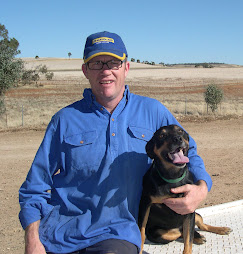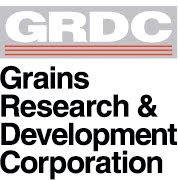California Map with Mountains (Brown) and Valleys (Blue)
The state of California has two major mountain ranges running roughly north and south. One is along the coastal side and the other along the border with Nevada. The San Joachim Valley with Fresno in the centre has two distinct soil type and water. The east side has granitic soil with large amounts of underground water. The west side has very deep sandy soils with little water and get the water from reservoirs and channels. None of the underground water is regulated with volumetric controls. They are having trouble with the environmental movement. The valley has an average of 175mm (7”) rainfall.
Terranova Range
Manager Don Cameron gave us an insight into the cropping production on the 5000 acre property. Counting both perennial and annual they produce 26 crops. Onions, processing tomatoes, carrots, broccoli and garlic are some of the annuals they grow. Some of these are gown under organic status. The perennial crop grown is lucerne. There is large range of tree crops include pistaccio, raisins, walnuts, grapes and olives.
Their land is worth $4000 / acre which comes with the water entitlement. This varied over properties that we have seen so far. A lot of labour used here is based on the local Mexican population, who are now USA citizens and those who come up from Mexico each year for 6 – 9 months. The value of this labour underpins a lot the lower cost of production. The base wage is $8.50 - $9.00 / hr with no overtime. Don from Terranova had upped his wages this year and increased his retention rate by 50%
Tomato Harvester
The processing tomatoes are now being grown on underground drippers. The other crops are being irrigated by overhead sprinklers in the form of centre pivots, lateral move or semi permanent.
A unique piece of machinery is the Organic Cotton Dessicator. It runs with propane gas and does the same job as Grammoxone or Sprayseed. It was an experimental model for the UC Davis Fresno Campus.
Row Crop Tractor
Cherry Orchard
Red Rock Ranch
John Deinam runs a large family operation, specializing in fruit such as Oranges & Tangellos and vegetables such as lettuces. Also they grow some crops for breaks such as wheat, safflower and lucerne. This soil on the property has a high of salinity and uses the safflower and lucerne to lower the perched water table.
Flood Irrigation
John is trialling some saline water interception techniques. One is put the water through brine tanks and growing brine shrimp. He has a small desalination plant or as they call it a R O unit (reserves osmosis unit). The mineral collected are going to glass making factories and other operations.
Brine Shrimp Production
The climate in California is good for growing vegetables as the season work against the pests, as they have trouble living through the year. John said the winters have low temperatures but with high humidity and the summer are hot and with low humidity don’t give the right conditions for a sustained pest problem.
Fancy Lettuce Production
John and his business have a large percentage of the crop in lettuces with two crops per year. The Fresno area have 10,000 lettuces coming in each day. John Deinam has 35% of this market.
Harris and Wolf Almonds.
This is a collaborative model where two prominent families who grew almonds worked together to build a processing plant. The almonds are knocked off the trees and allowed to dry out on the ground and then bought in to the factory. The almonds are firstly de husked and then either deshelled or sent straight to the cleaning section. This is done as they have a market in Spain and India for almonds still in the shell. The deshelled are put though a number of cleaning machines. The clean almonds are then graded again into cleans, scuffed and broken.
Almond Plant
Dave in Disguise
Finished Clean Almonds
They are now starting to process other grower’s almonds and are paying in a pool system. They are paid 50% on the processed almonds and the second 50% in a pool when all the almonds are sold for that season.
Tepanyaki
For dinner we tried something new. It was something else to tick off the list.
Starting the Prawn Entre
Whats a Good Tepanyaki Without Fire
















No comments:
Post a Comment